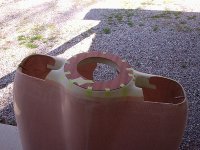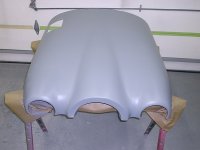KT,
First of all, very nice detail on your initial video. You explain things very well, and I have to say, you have done a very nice job with your initial fitting of your cowl. The sides and the firewall ends are the main parts to get right. After that, the spinner backplate clearance is the next most important areas, and this looks fine too. I had to build up my backplate clearance area on my last build, because it wasn’t even. The air intake areas (outboard) look like almost everybody’s intake areas. Very easy to fix without making any adjustments to the other perfectly fit parts of your cowl, previously mentioned. Rather than than adjusting your perfectly aligned cowl, build up the areas of the cowl inlet that don’t align. I’ve done this on every cowl I’ve done so far. I took a piece of .025 Al covered with packing tape and mold release, slid it in between the upper and lower cowl half sections in that nose area, slathered the upper part with an epoxy/chopped glass slurry (after roughing up the surface to be filled with 60 grit), smoothed it as best I could with a spatula, and let it cure. Sanded it after cure and maybe added a layer or two of epoxy filler to make it smooth and aligned with the lower cowl lip. If that upper cowl lip is too thick for your liking, just grind some of it away from the inside with dremel tool sander wheel. If you are worried about strength because you’ve ground away too much of the original structure, just epoxy in a layer or two of 9 oz cloth on the inside.
All of this I’ve said just takes a few minutes for each step. If you don’t like the outcome, sand it off and try again. You’ve done a very nice job on your cowling. Don’t mess it up by trying to make adjustments that will sacrifice the other , more important areas that you’ve already done such a good job fitting. Those insignificant cowl inlet areas can be easily made perfect (like the rest of your cowl) with epoxy, flox or chopped glass, and minimal cloth fillers.
You might want to take one of those SS rulers (.032”) and make sure it slides between the upper and lower cowl halves for paint clearance. If you are going to use vinyl, you may want to double that.






